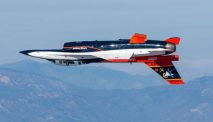Diksia.com - About a week after the successful landing of the Chandrayaan-3 probe at the moon’s south pole, India accelerated and launched a rocket to take the Aditya-L1 mission to the sun. The space research competition is even more exciting.
Currently, countries with advanced space technology are trying to reach and explore the moon. Not only the moon, Mars and the sun are other destinations that need to be explored.
Apart from India, here are the countries racing around the sun, summarized and quoted by detikINET from The Hindu, Monday (4/9/2023)
The American space agency NASA launched the Parker Solar Probe in August 2018. In December 2021, the Parker Solar Probe flew through the sun’s upper atmosphere, the corona, and picked up particles and the magnetic field there. This is the first time a space probe has touched the Sun.
In February 2020, NASA, in collaboration with the European Space Agency ESA, launched Solar Orbiter to collect data to understand how the Sun creates and controls the ever-changing space environment throughout the Solar System.
NASA’s other solar exploration missions still active today include the Advanced Composition Explorer launched in August 1997, the Solar Terrestrial Relations Observatory launched in October 2006, the Solar Dynamics Observatory launched in February 2010, and the Interface Region Imaging launched in June 2013 spectrograph.
In addition, NASA, ESA and JAXA (Japan Aerospace Exploration Agency) jointly established the Solar and Heliospheric Observatory (SOHO) in December 1995.
JAXA, Japan’s national space agency, launched its first solar observation satellite, Hinotori (ASTRO-A), in 1981. The mission’s goal was to study solar flares using X-rays.
Other JAXA solar exploration missions include Yohkoh (SOLAR-A) in 1991, SOHO with NASA and ESA in 1995, and Transient Region and Coronal Explorer (TRACE) with NASA in 1998.
In 2006, Hinode (SOLAR-B) was introduced. This mission is the successor to Yohkoh (SOLAR-A), an orbiting solar observatory. Japan introduced it in cooperation with the USA and Great Britain. The goal of Hinode, a satellite observatory, is to study the effects of the Sun on Earth.
In October 1990, ESA launched the Ulysses probe to study the space environment above and below the Sun’s poles. In addition to the solar mission launched in collaboration with NASA and JAXA, ESA also launched Proba-2 in October 2001.
Proba-2 is the second part of the Proba series and builds on the successful experience of Proba-1 over almost eight years, even when Proba-1 was not a solar reconnaissance mission.
Four experiments are taking place on board Proba-2, two of which are observations of the Sun.
Proba is an abbreviation for Project for On-Board Autonomy. ESA’s upcoming solar missions include Proba-3, scheduled for launch in 2024, and Smile, scheduled for launch in 2025.
The Advanced Space-based Solar Observatory (ASO-S) was successfully launched on October 8, 2022 by the National Space Science Center of the Chinese Academy of Sciences (CAS).
ASO-S flies to study the Sun and improve space weather forecasts. The satellite flew on a Long March 2D rocket.
This spacecraft is also nicknamed Kuafu-1, after the giant in Chinese mythology who chased the sun. Kuafu-1 was successfully launched into its target orbit, a sun-synchronous orbit about 720 km above Earth.






